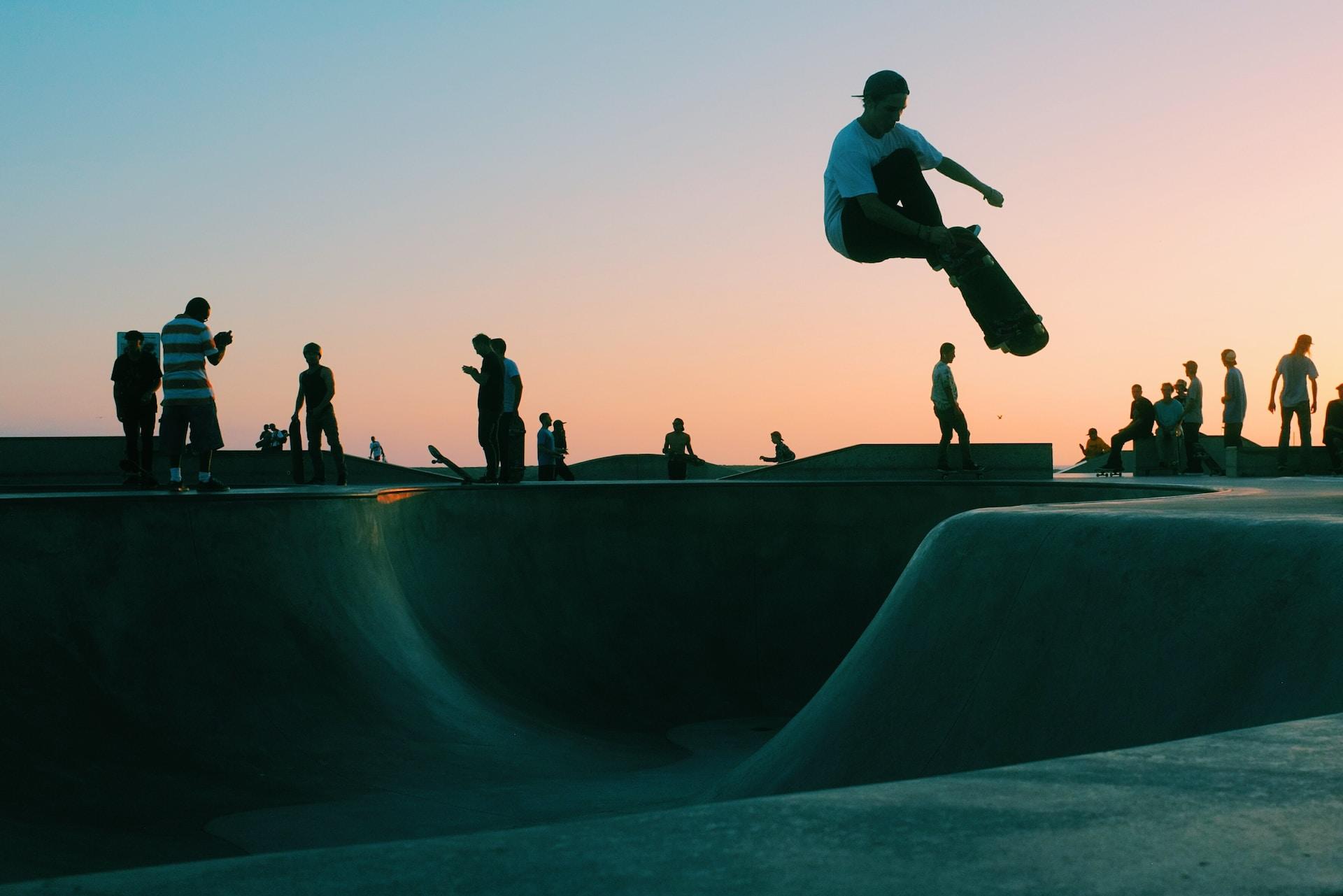If you're new to skateboarding and the community, you mightn't know anyone or anything so practising on your own might be your only option (for the time being). Here's how you can safely and effectively practice skateboarding on your own.

Be Safe
We don't want to sound like your parents, but you should be safe when skateboarding. It mightn't sound like the coolest thing to say, but you can do a lot more skateboarding if you aren't injured or dead.
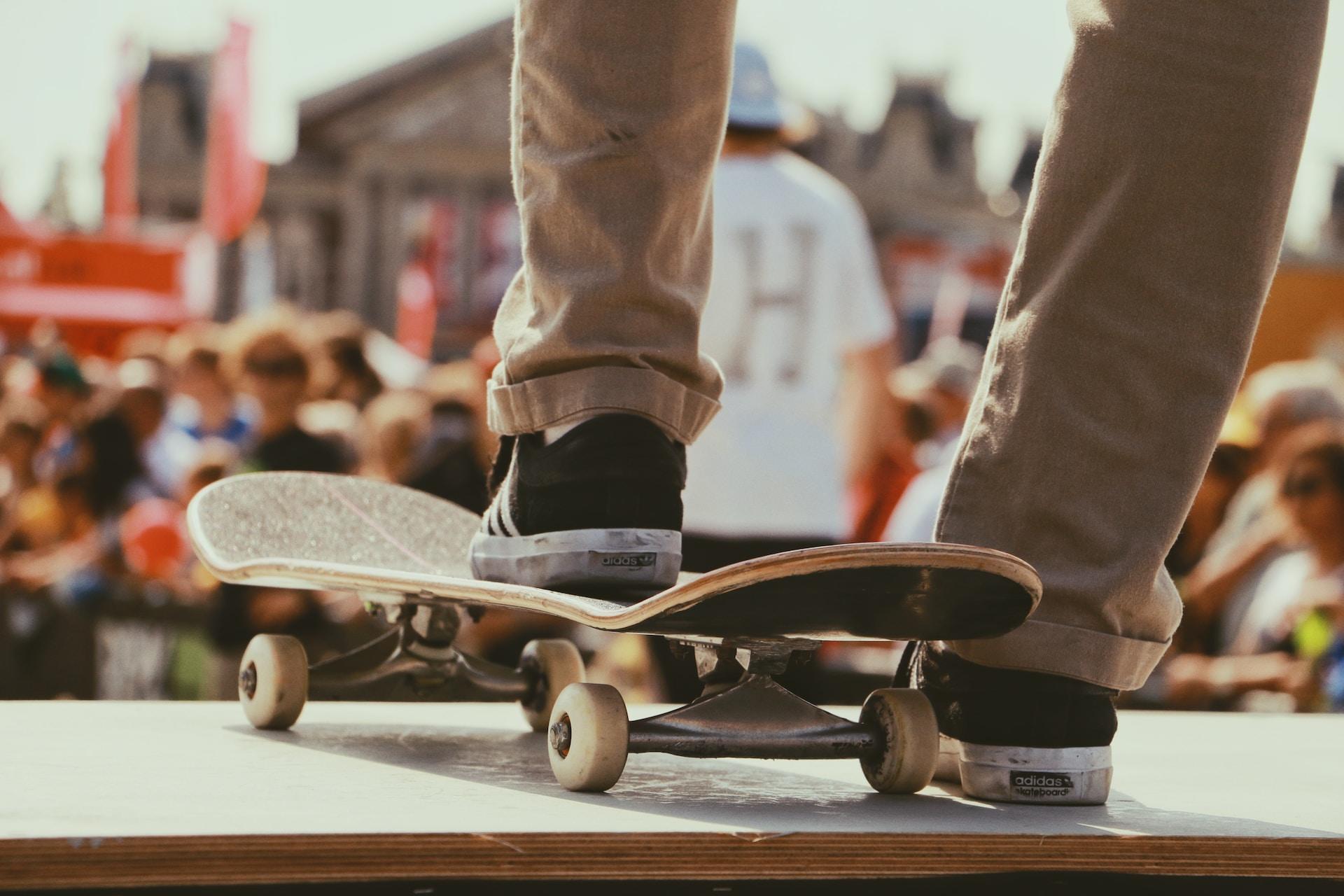
When you first start skateboarding, you'll likely fall a lot and you don't want a simple fall to stop your skateboarding journey as soon as it starts. Even low-speed falls can cause major injuries if you fall in the wrong way and can be easily mitigated with some affordable safety equipment.
Helmet
Get yourself a helmet. Falling can become very dangerous if you hit your head on something hard like concrete, cement, a metal rail, or any of the other kinds of things and materials you'll find yourself surrounded by when you skateboard.
Make sure that your helmet is properly fitted and suitable for skateboarding. You want to look for certifications like CPSC, ASTM, or EN1078 for the helmets you buy. When in doubt, you can always ask a staff member at a skateboarding shop.
Knee and Elbow Pads
Knee and elbow pads will protect against impacts and abrasions. You don't want your skateboarding sessions to be cut short because of a nasty graze or bump and pads are a fairly cheap and effective way to protect yourself.
Wrist Guards
We can't stress enough just how often you're going to fall. Wrist guards can protect your wrists from sprains, fractures, and breaks.
Since you'll automatically put your arms out when you fall, your wrists are likely going be used to soften your landing. When learning tricks, you'll regularly fall onto them so make sure that they're protected.
Having appropriate safety equipment can also help beginners get over a fear of skateboarding.
Shoes
Invest in a good pair of skate shoes. These generally have flat soles for better contact with the board and are designed with skateboarding in mind.
You can find some decent skateboarding shoes on a budget, too, as they tend to be cheaper than some of the more “fashionable” sneakers out there.
Other Clothing for Skateboarding
If you're skateboarding during the day, long sleeves and pants can be useful options against sunburn (as can sunscreen). If you get carried away and spend all day skating, you'll be thankful that you covered up because nobody wants a nasty sunburn.
Find a Good Place to Practice
If you choose to practice skateboarding alone, you'll still need to find a suitable place to go skateboarding. Generally, we'd still advise going to a skatepark as they're obviously designed for skateboarding.
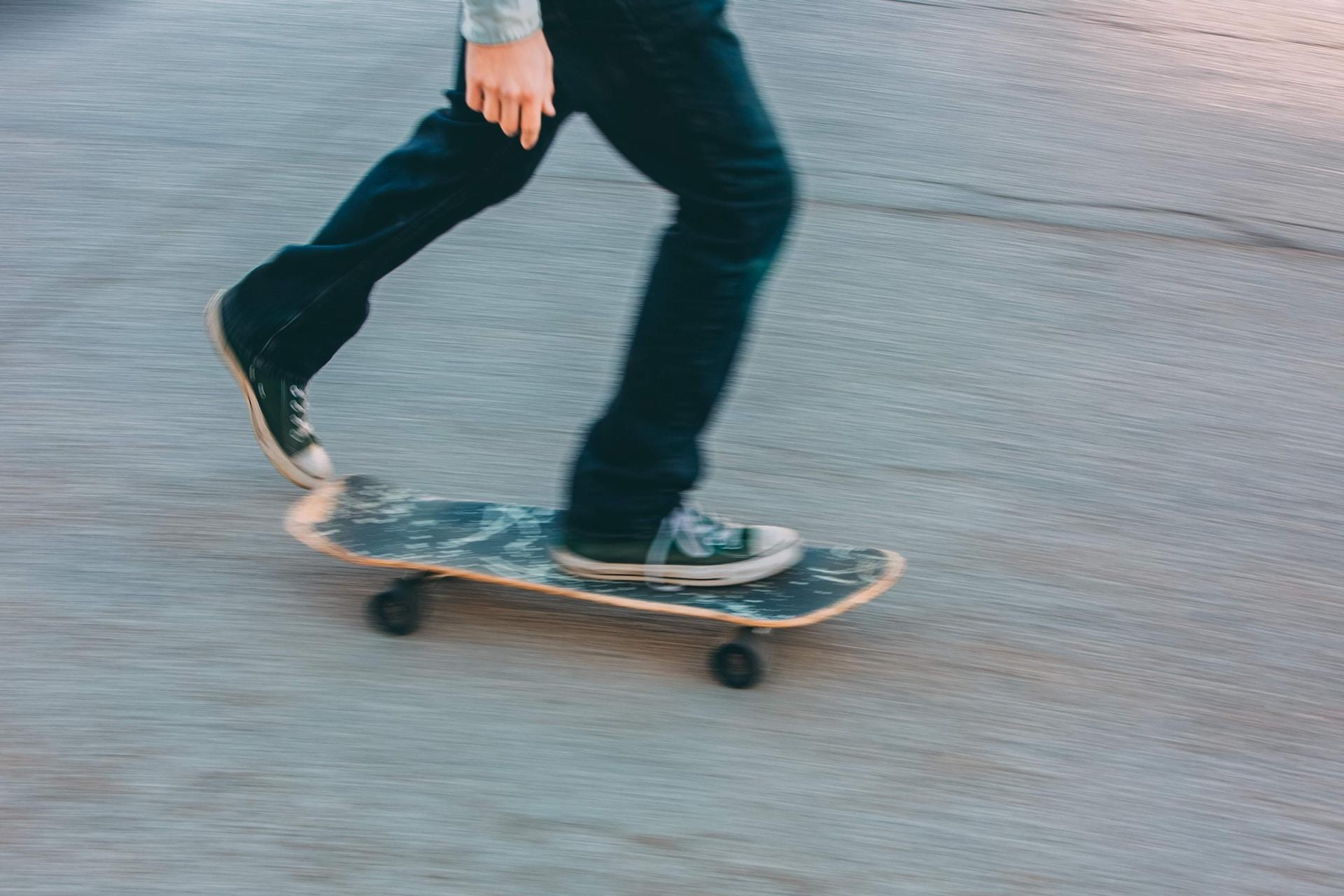
Even if you go on your own, you'll likely meet other skateboarders. As a newcomer, it's a good idea to follow their lead when it comes to how you behave and your etiquette.
While "etiquette" mightn't sound like a word that goes with the famously counterculture skateboarding, there are unwritten rules of how to behave when using a shared skateboarding space so it's always a good idea to ask the regulars what the deal is.
Outside of skateparks, you can also go to abandoned or empty parking lots as you'll have a lot of flat space to learn the basics. Schoolyards and plazas are also good options provided you're allowed to skate there.
For obvious reasons, we can't recommend that you skateboard anywhere it's illegal to do so. Always check that skateboarding is allowed wherever you choose to practice.
How to Find Good Places to Skateboard
The best way to find suitable places to practice skateboarding is by asking other skateboarders. You can find online communities of skateboarders and even websites for finding skateparks and other appropriate places to skateboard.
You can also ask local skate shops where the best places to skate are and where their other customers prefer to practice skateboarding.
If you're purposely avoiding these places because you're shy or too embarrassed about your level because you're a complete beginner, then you may need to look around your local area for open spaces. However, we'd definitely recommend getting involved with the skateboarding community as soon as you start because you'll find it to be very welcoming and helpful.

Choose a Suitable Skateboard
It doesn't take a genius to work out that you can't skateboard without a board! You need to pick a suitable board and remember that breaking the bank on an expensive high-end board won't automatically make you the world's greatest skateboarder.
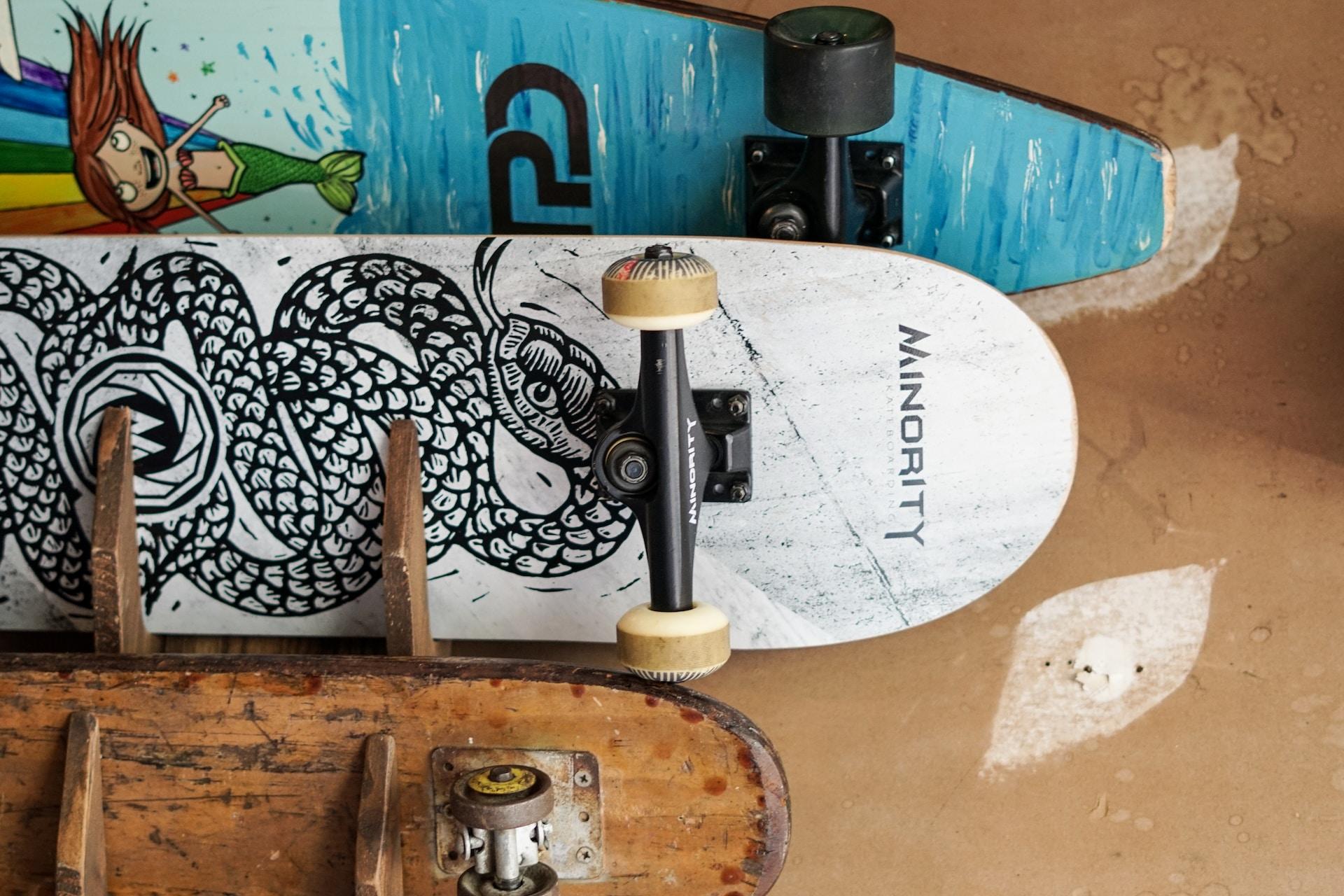
Your board should reflect your level and there's no harm in getting an affordable board as you start. That said, there are some things to look out for when choosing your board.
You can buy skateboards fully assembled or you can buy all the appropriate parts separately and put them together. For beginners, it's recommended that you just buy a pre-built board as it's unlikely that you'll have the knowledge needed to choose the right setup.
Beginners may want to choose wider decks, too, as these offer more stability, especially for beginners. Speak to a staff member in your local skate shop for advice. Longboards are different from skateboards and designed for cruising or going downhill.
You'll want trucks that prioritize stability, too, as you'll need this as you get to grips with standing on a skateboard and moving around.
While it can be tempting to spend a lot, your budget should be relative to your level. As you get better at skateboarding, you can always upgrade your gear for better performance but your equipment won't necessarily make you better at skateboarding until you get better.
Start with the Basics
Even though you've probably seen lots of excellent tricks done by professionals, it's going to be a while before you're anywhere near the level to even attempt them.
Skateboarding is like any other skill and you aren't going to be immediately good at it when you start. There are going to be frustrating moments when you can't do the things you want to do and you'll fail a lot.
Any experienced skateboarder will tell you it's all part of it. Just ask them how many times they've fallen off their board or how many times they tried a new trick before they were able to do it.
Start simple and remember that failing is just a part of learning and getting better.
Work Out Your Stance
Before you can skateboard, you'll need to find out what your stance is. This should be pretty natural and obvious when you first step on the board. On a skateboard, you have a front foot and a back foot as you face sideways from the direction of travel. You'll either have your left foot forward (regular) or your right foot forward (goofy).
If you're really not sure, you'll soon work this out when you start pushing the board.
Push
Pushing is the act of moving the skateboard with one of your legs and one of the first things you'll learn how to do on a skateboard.
Your back foot will be the one that pushes so if you haven't been able to work out your stance by just standing on the board, once you go to push, you'll likely work it out.
Much like we have a dominant hand we use to write with, we have a dominant leg that we'll use to push a skateboard. This will likely be the same leg that you kick with, but this isn't always the case.
Steer
Once you're moving on your skateboard, you'll also need to learn how to turn. Start in nice open areas.
You steer a skateboard by shifting your weight through your feet to either edge of the board. The board will turn towards the side with the most weight on it.
Start by turning by just shifting your weight onto your toes or your heels. As you advance, you can start leaning into turns.
Keep Your Balance and Learn to Fall
Before you tackle any kind of trick, you need to learn how to balance on the board. The better your balance, the less frequently you'll fall off your board.
This doesn't mean that you won't ever fall and you'll need to get used to falling safely. Generally, you'll want to roll with the fall and avoid stretching your hands out to stop yourself as this can damage your wrists.
Protective equipment will help you to minimize damage when falling so you can get back up and try again.
Don't Skateboard Alone
While you mightn't want to skateboard with others because you're not very good, we don't recommend it. As we mentioned earlier, the skateboarding community is famously welcoming and helpful, especially to its newest members.
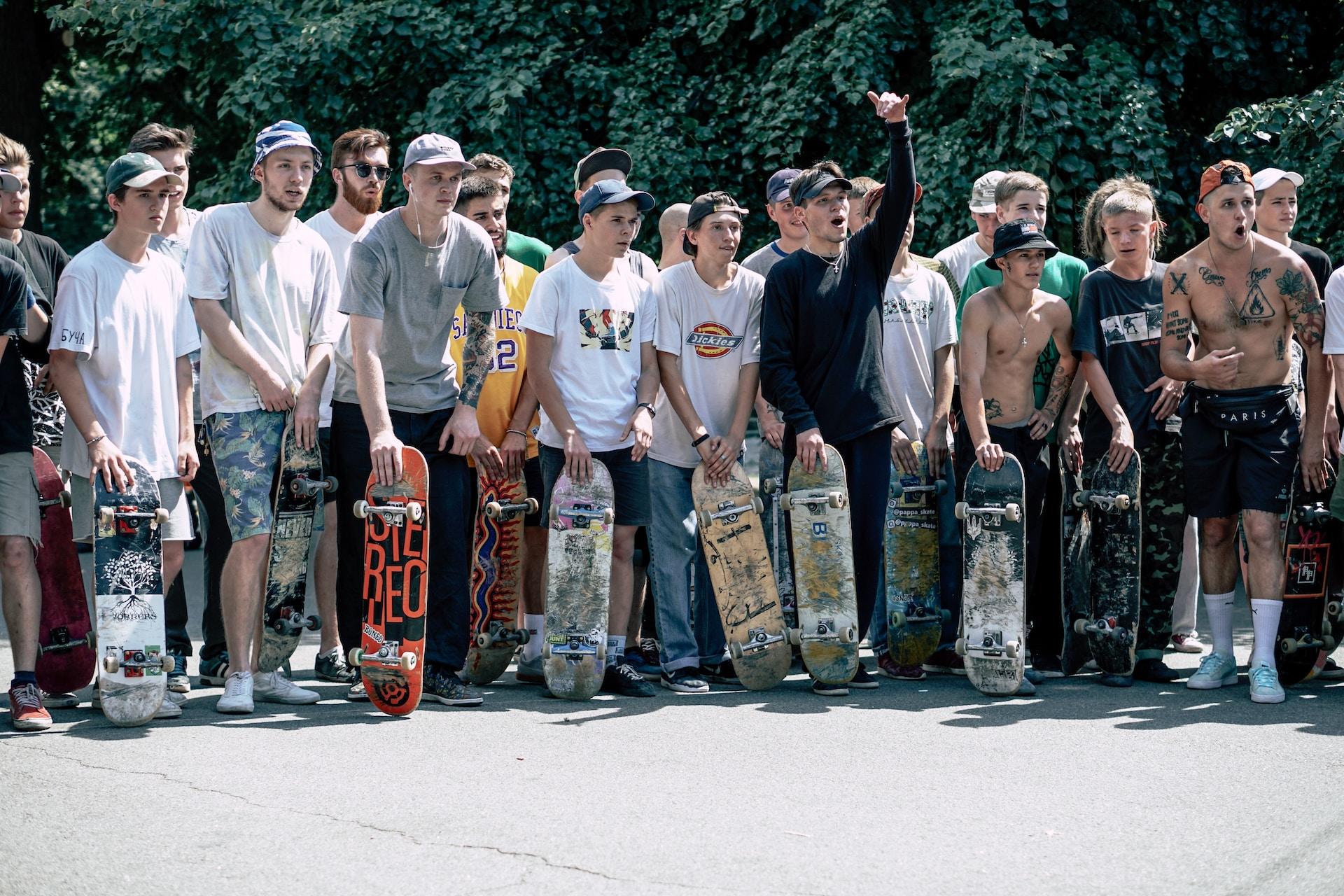
Even if you don't want to skateboard in front of others, it might help to learn skateboarding with somebody else like a private skateboarding tutor or coach.
While there are plenty of online tutorials and resources for learning how to skateboard, having somebody teach you is the best way to learn techniques more quickly.
You can pick up bad habits that ultimately hinder your progress if you try to teach yourself and you can avoid this by just having one person there who knows what they're doing.

